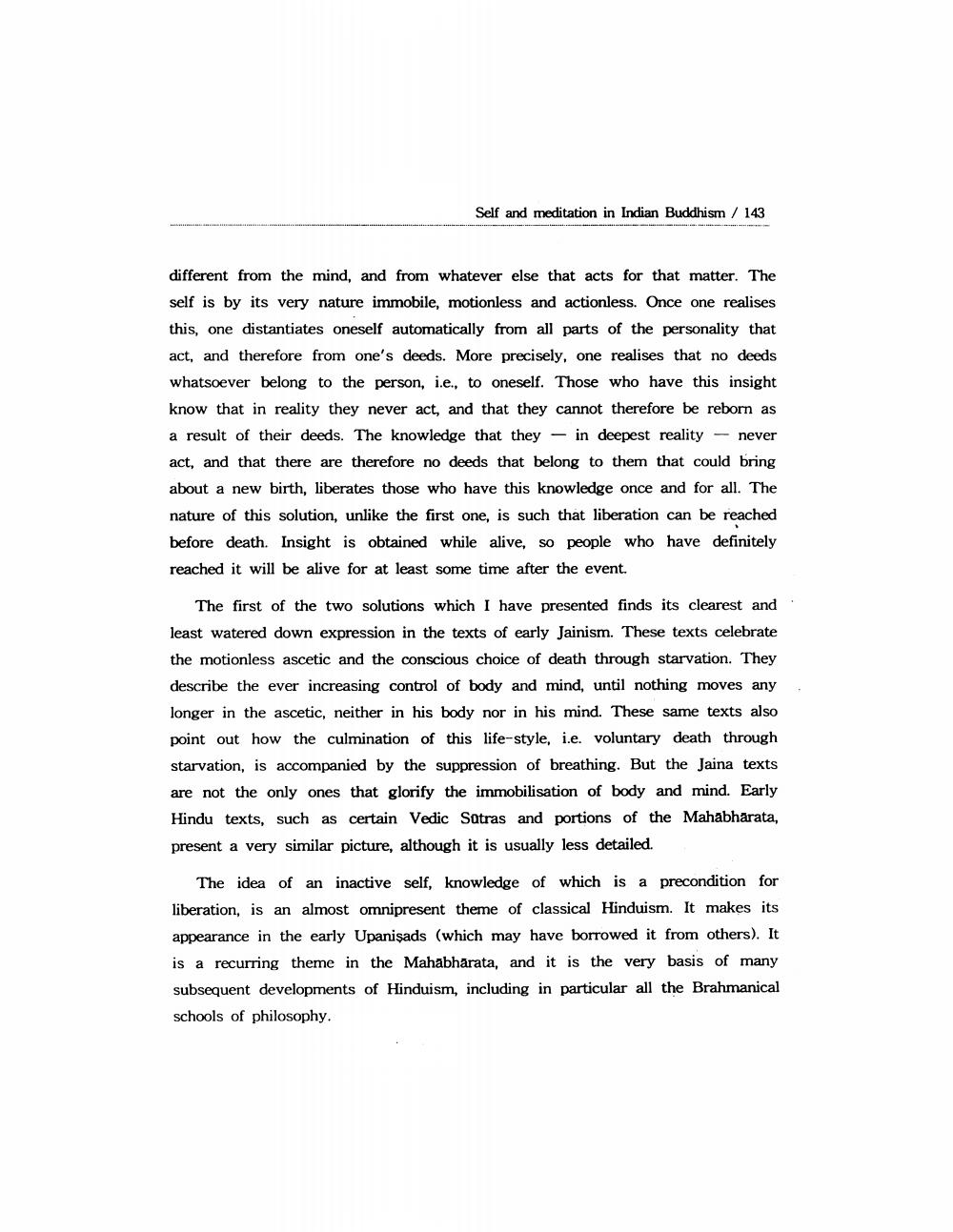Book Title: Self And Meditation In Indian Buddhism Author(s): Johannes Bronkhorst Publisher: Johannes Bronkhorst View full book textPage 3
________________ Self and meditation in Indian Buddhism / 143 different from the mind, and from whatever else that acts for that matter. The self is by its very nature immobile, motionless and actionless. Once one realises this, one distantiates oneself automatically from all parts of the personality that act, and therefore from one's deeds. More precisely, one realises that no deeds whatsoever belong to the person, i.e., to oneself. Those who have this insight know that in reality they never act, and that they cannot therefore be reborn as a result of their deeds. The knowledge that they — in deepest reality - never act, and that there are therefore no deeds that belong to them that could bring about a new birth, liberates those who have this knowledge once and for all. The nature of this solution, unlike the first one, is such that liberation can be reached before death. Insight is obtained while alive, so people who have definitely reached it will be alive for at least some time after the event. . The first of the two solutions which I have presented finds its clearest and least watered down expression in the texts of early Jainism. These texts celebrate the motionless ascetic and the conscious choice of death through starvation. They describe the ever increasing control of body and mind, until nothing moves any longer in the ascetic, neither in his body nor in his mind. These same texts also point out how the culmination of this life-style, i.e. voluntary death through starvation, is accompanied by the suppression of breathing. But the Jaina texts are not the only ones that glorify the immobilisation of body and mind. Early Hindu texts, such as certain Vedic Satras and portions of the Mahabharata, present a very similar picture, although it is usually less detailed. The idea of an inactive self, knowledge of which is a precondition for liberation, is an almost omnipresent theme of classical Hinduism. It makes its appearance in the early Upanisads (which may have borrowed it from others). It is a recurring theme in the Mahabharata, and it is the very basis of many subsequent developments of Hinduism, including in particular all the Brahmanical schools of philosophy.Page Navigation
1 2 3 4 5 6 7 8 9 10 11 12 13 14 15 16 17 18 19
